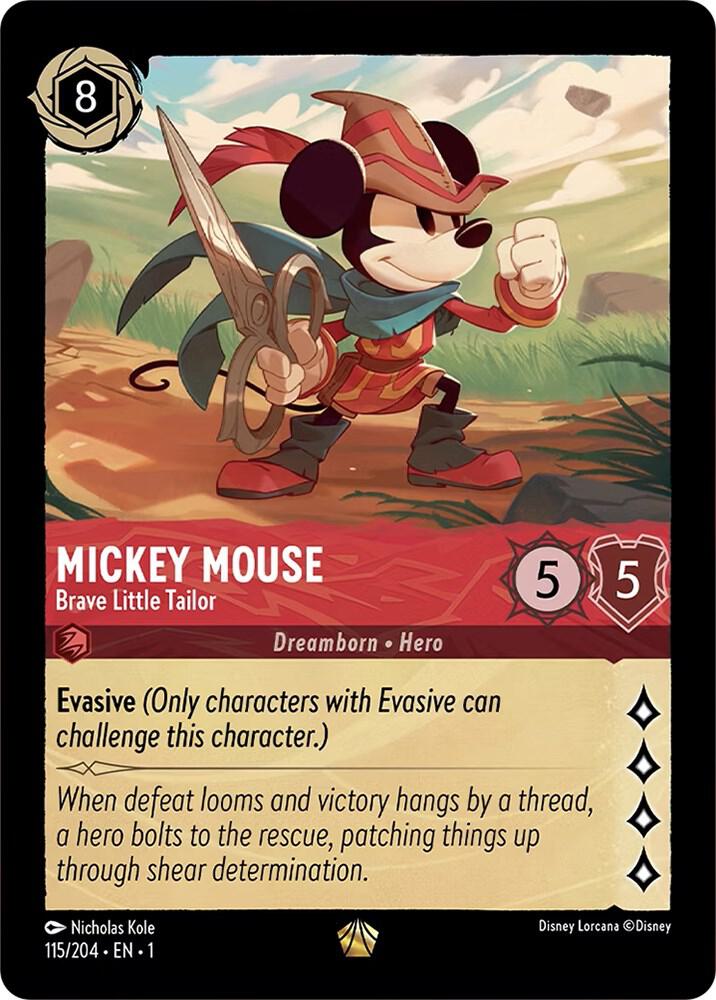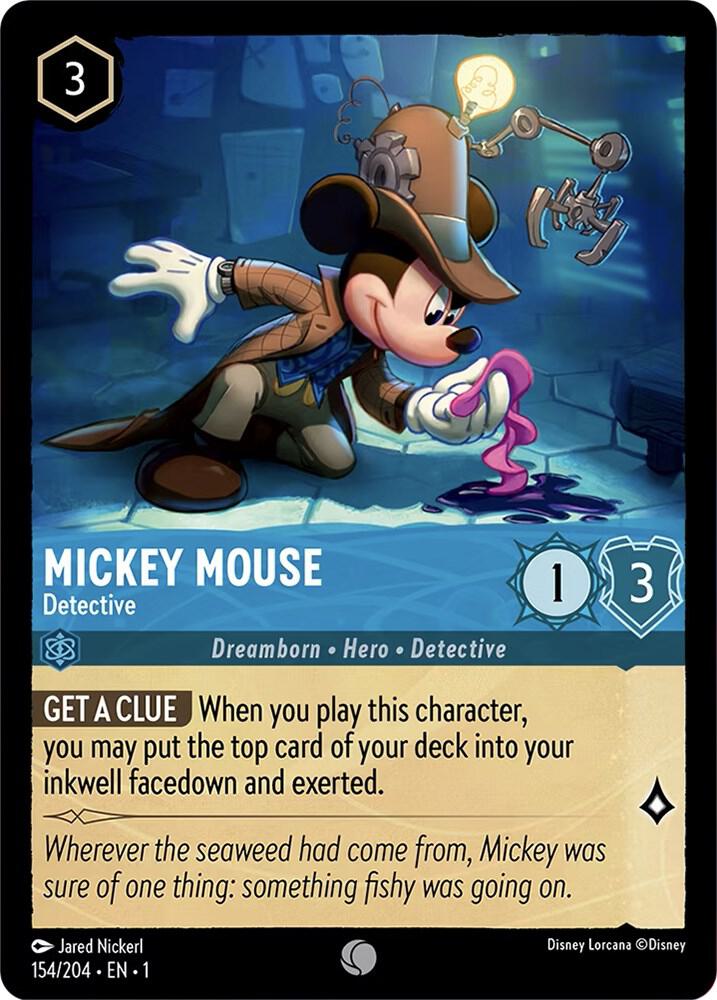Intro to Lorcana
This year, I got into the Disney Lorcana Trading Card Game (TCG). This is my first time playing a TCG and it’s been very fun so far.
I was introduced to the game by the wonderful staff of Your Hobby Place, a hobby store in Alexandria, VA that sells merchandise and host events for a variety of board games, trading card games, and miniatures. I passed by the store while getting groceries one day and decided to check it out after seeing a Pokémon poster on the door. The staff members and the manager Mike were welcoming and gave me a quick intro to some of the games at the store. I first tried playing Magic the Gathering - Commander Format since that was a very popular game at the store, but Magic the Gathering overwhelmed me due to the wide variety of cards and the walls of text on each card. Then one of the staff members named Chris showed me a new game called Disney Lorcana which had fewer cards and interactions, and thus was easier for me to learn. This was the start of my new hobby.
Every Sunday afternoon, I would go to Your Hobby Place to play Lorcana with fellow hobbyists. In the process, I learned the Do’s and Don’ts of Lorcana. I will attempt to explain some of the game mechanics, but full disclaimer my explanation is not comprehensive. If you are curious to learn how to play the game, I recommend watching this YouTube video by Inkborn Heroes.
Below I will use the character cards Mickey Mouse - Brave Little Tailor and Mickey Mouse - Detective as examples to explain some of the Lorcana game mechanics.


The game’s objective is simple: you and your opponent each bring a deck of at least 60 cards, then play these cards to gain points called lore. Whoever gets to 20 lore first is the winner. As of September 2024, there are no banned cards. The only rule is that you can have no more than 4 copies of a card in your deck. This rule only applies to a card name, but different variations of the same character name are treated as unique. So you can have up to 4 copies of Mickey Mouse - Brave Little Tailor and 4 copies of Mickey Mouse - Detective in your deck because these have different names.
At the start of the game, both you and your opponent first roll a pair of six-sided dice and whoever gets the higher roll gets to decide who goes first. Since there is an advantage to going first in this game, usually whoever gets the higher roll will decide to go first.
Then each of you draw 7 cards and get to decide whether or not you want to keep these cards, or put some or all of them back into the bottom of your deck in order to draw the same number of cards from the top of your deck. This process of choosing what cards to keep and put back is called the “mulligan phase”. If you declare that you will keep your hand, that means you don’t put anything back, which might make your opponent suspect that you have a very good hand. In contrast, if you declare that you will “mulligan” 5 cards, that might make your opponent suspect that you did not have a good hand and are looking for better cards for your strategy. Both you and your opponent must declare if you will keep or mulligan your hand, and if mulligan how many cards.
At the start of the turn, each player must draw a card from the top of their deck. The only exception to this is the player going first cannot draw a card from the top of their deck on their first turn. This is to offset the advantage they get from going first. The player may choose to reveal a card from their hand that contains a rose-like frame on the top left corner of the card, and then declare they will put that card facedown into ther inkwell. You can only put cards that are inkable into the inkwell. Inkable cards like Mickey Mouse - Brave Little Tailor have a rose-like frame on the top left number of the card, while un-inkable cards like Mickey Mouse - Brave Little Tailor do not have that frame on the top left number of the card. The inkwell is similar to the mana pool in Magic the Gathering. It represents the amount of resources you can use to play cards with. The numbers on the top left corner of the card indicates how much ink it costs to play that card. Mickey Mouse - Brave Little Tailor costs 8 ink to play, while Mickey Mouse - Detective costs 3 ink to play. That means it would take 8 turns of putting a card into your inkwell each turn before you would have enough ink to play Mickey Mouse - Brave Little Tailor. There are ways to reduce the cost of a card or to put more than one card into your inkwell in a given turn, for example with the Get a Clue ability of Mickey Mouse - Detective.
When playing a card, you turn sideways the number of cards in your inkwell that is required to pay the cost of playing that card and declare you are paying that amount to play a card. A card cannot quest on the turn it is played, and it cannot challenge on the turn it is played unless it has a keyword called Rush. This is equivalent to summoning sickness in Magic the Gathering. Then you may do any number of valid interactions before declaring you end your turn. Your opponent repeats this process, then its back to your turn again.
Let’s say on the previous turn you played Mickey Mouse - Brave Little Tailor and now its your turn again. Now you can tap the card sideways and declare you are questing with that card to gain lore. The amount of lore that a character gains from questing is indicated by the number of these diamond-like shapes on the bottom right side of the card. Mickey Mouse - Brave Little Tailor quests for 4 lore, which is a lot! The card also has the Evasive keyword, which means only characters with Evasive can challenge this character. This is similar to the Flying keyword in Magic the Gathering. This card is expensive to play and costs 8 ink because it can quest for 4 lore and it cannot be challenged by opposing characters that don’t have the Evasive ability.
The Strength of the character is indicated by the number on the 8-sided star icon on the right side of the card, while the Willpower of the character is indicated by the number on the shield icon. Strength determines how much damage a character can deal when it challenges another character, while Willpower determines how much damage a character can receive before it gets banished from the board and sent to your discard pile. If Mickey Mouse - Brave Little Tailor challenged Mickey Mouse - Detective, then it would deal 5 damage which is greater than or equal to the 3 willpower of Mickey Mouse - Detective, causing the Detective card to be banished. Mickey Mouse - Detective would deal 1 damage to Mickey Mouse - Brave Little Tailor, which means the Tailor still has 4 willpower remaining and thus survives the challenge.
This concludes my simple explanation on the game of Lorcana. It is a fun game for both children and adults. If you want to get into the game and purchase a starter deck, then I recommend the Rise of the Floodborn Starter Deck - Amethyst & Steel. I’ve also included some helpful resources below:
- Disney Lorcana Store Locator - official website to find hobby stores near you that sell Lorcana merchandise and might have a potentially weekly group of players
- Disney Lorcana Companion App - official mobile app to keep track of your collection, view all cards in each set, and keep track of points in a game.
- Dreamborn - unofficial fan-made website to explore popular decks and build hypothetical decks of your own
In the next blog post, I will describe my attempts to create a similar site to Dreamborn that can
- search for specific Lorcana cards by name and other attributes
- keep track of your Lorcana card collection